How to Change Keychain Password on Mac

Do you want to change the password used to access your Keychain data on a Mac? There are two ways to change the Keychain password, depending on whether it’s a default Keychain, and therefore whether you have multiple Keychains or not.
If you aren’t aware, your Keychain password is the same as your Mac’s user password that you use to sign in to your computer by default. Whenever you change this user password, the default Keychain password is automatically updated to match it as well. However, you can create multiple Keychains on a Mac in addition to the default Keychain, and you can set them to any password that you prefer.
We’ll be guiding you through the steps to change the Keychain password on macOS systems.
How to Change Default Keychain Password on Mac
If you haven’t created any additional Keychains, you’ll have one default Keychain created automatically by macOS for you, called “login”. To change the password for this, you’ll need to change the password for your user account, which keeps things congruent. Simply follow the steps below to get started.
- Head over to “System Preferences” on your Mac from the Dock or Apple menu.

- Next, click on “Users & Groups” as shown in the screenshot below.

- Here, select the admin account that you use and click on “Change Password” to proceed further.

- Now, type in your current password and enter your preferred new password for the Mac. Give a hint and click on “Change Password” to confirm your changes.

If you followed along, you have successfully changed your Mac’s user password and your Keychain password is automatically updated to match that.
How to Change Password for Other Keychains on Mac
For Keychains that are not the default ones on Mac, you will be able to change the password manually from Keychain access. Just follow the steps below:
- Click on the “magnifying glass” icon located at the top-right corner of your desktop to access Spotlight search. Alternatively, you can open Spotlight by pressing Command + Space bar.

- Next, type “Keychain” in the search field and open “Keychain Access” from the search results.

- Once Keychain Access opens up, right-click the Keychain that isn’t default from the left pane and choose “Change Password for Keychain”.

- Next, if the Keychain is currently locked as indicated by the lock icon right next to it, you’ll be asked to enter this Keychain’s current password.

- Now, type in the current password and choose a new password as you prefer. Click “OK” once you’re done.

That’s how you can change the password for a Keychain that’s not the default login Keychain. This is helpful if you’ve created a new Keychain for whatever reason, or are juggling multiple keychains. Depending on your use case, you may or may not want to use the same password for the alternate keychains as you do your primary keychain.
Unfortunately, you won’t be able to change the password for the default login Keychain using the Keychain Access app method. If you right-click on any default Keychain, you’ll notice that the option to change its password will be grayed out. However, you can still get around this by creating another Keychain and then making it the default Keychain. Once you’ve done this, you’ll be able to set a new password for the login Keychain.
Don’t forget these passwords, though if you do, you can easily reset a macOS password by using an Apple ID feature.
A word of caution; if you recently reset your macOS user password after losing or forgetting it, you will no longer be able to access the existing Keychain data stored on your Mac, as the Keychain password is no longer in sync with the Mac’s password. In such cases, you’ll need to reset your default login Keychain, which deletes all the passwords stored in the Keychain, but allow you to sync up your login and Keychain passwords again. Or you could simply create a new Keychain and set that as your default, leaving the old one intact in case you happen to remember the password to it again.
Do you use an iPhone or iPad as well as Mac? If so, you might be interested in learning how to properly use iCloud Keychain on iOS and iPadOS devices. You can manually add new passwords to Keychain and even edit existing saved passwords to make sure the Keychain data is up to date as well, just like you can on the Mac.
We hope you were able to change the password for your existing Keychains on macOS, whether they’re default or custom ones. What are your overall thoughts on Keychain as a built-in password management tool on macOS and iOS devices? Share any relevant tips, thoughts, experiences, or opinions in the comments.


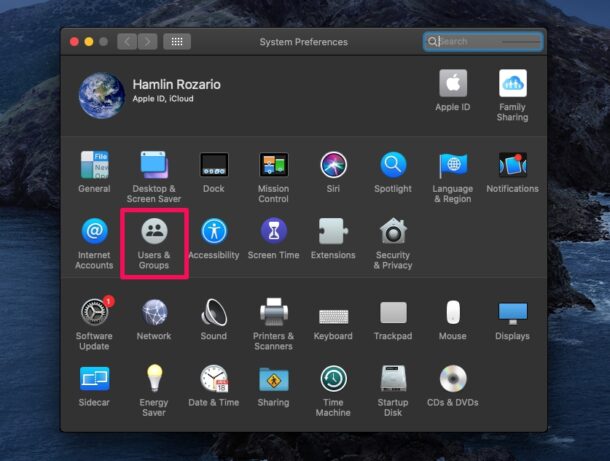
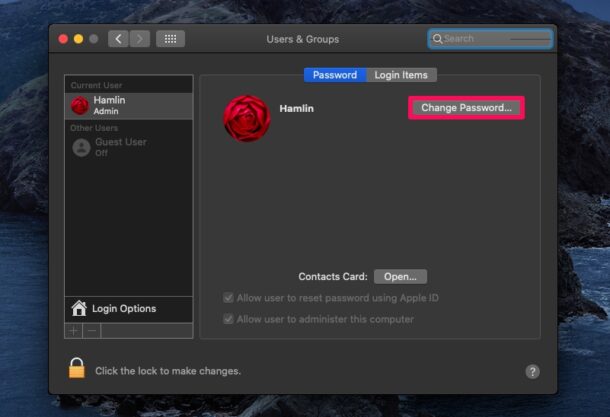
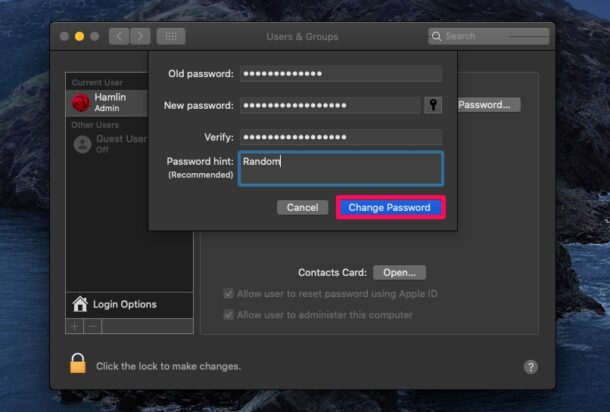

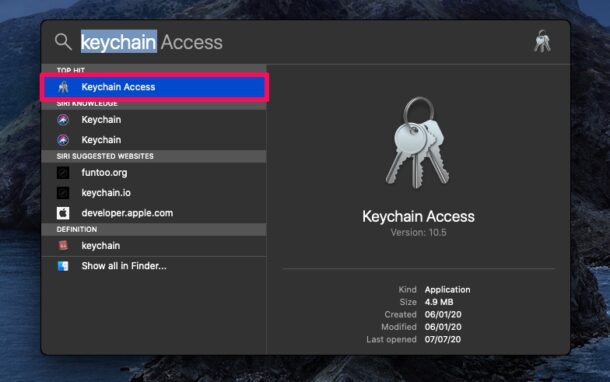
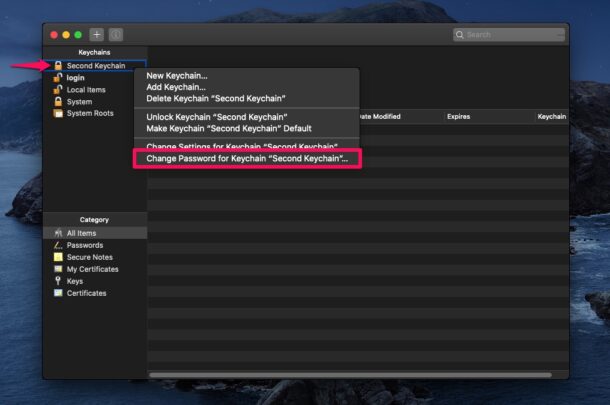
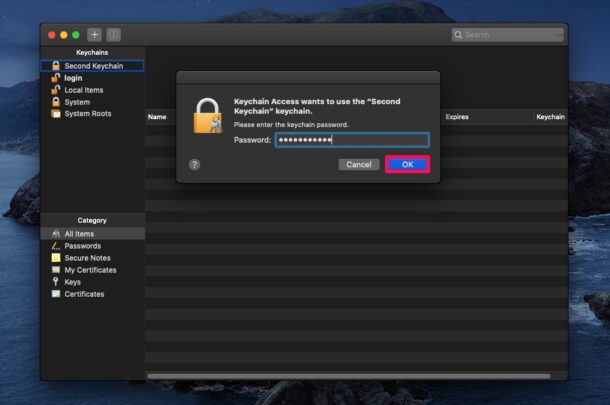
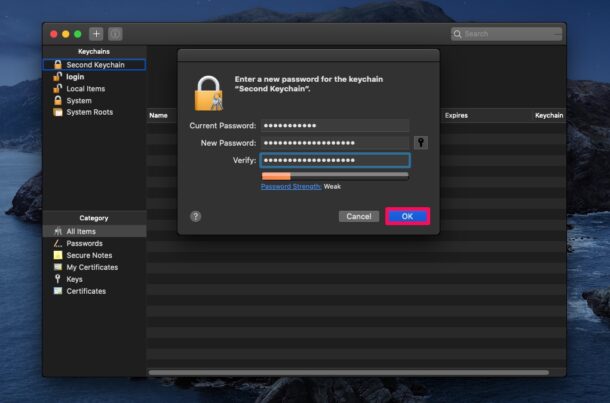

Thanks for the article but I have an interesting issue regards a password on my mac (Catalina 10.15.7).
My password for my mac ID (the password for updates, etc. – not to get in the mac). The password works fine on my iPad and iPhone. When I enter it in my MAC, it doesn’t state “Incorrect Password” it states “…unknown error”. It was suggested at one time to go through my keychain. However, I am not sure how to find the right key, etc. BTW, i can log directly in to my iCloud account, Apple account, etc. using password that I use on my iPad/iphone for updates without any issue.